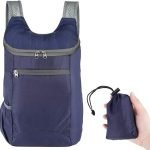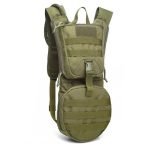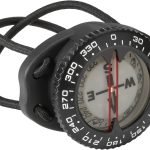In the great outdoors, having the right tools can mean the difference between a successful adventure and a challenging situation. Among the most crucial items for any outdoor enthusiast is a survival compass. A versatile survival compass not only helps with navigation but often includes various additional features that enhance safety and preparedness. In this article, we will explore the practical benefits of having a survival compass, key features to consider when choosing one, and tips for effective use in outdoor adventures.
Practical Benefits of a Survival Compass
A survival compass serves multiple practical purposes, making it an indispensable tool for anyone venturing into nature. First and foremost, it provides crucial navigation assistance. In unfamiliar terrain, a reliable compass helps you determine your direction and stay oriented, ensuring that you can find your way back to safety or explore new paths with confidence. This is especially important in areas where trails are not well marked or in conditions where visibility is limited.
In addition to navigation, many survival compasses come equipped with features that enhance your safety in the wilderness. For example, built-in thermometers can provide valuable information about temperature changes, helping you prepare for sudden weather shifts. A humidity meter can also be beneficial, indicating moisture levels that may affect your comfort and safety during your outdoor activities.
Moreover, a survival compass often includes emergency features such as whistles and LED flashlights. A whistle can be a lifesaver in emergency situations, allowing you to signal for help without exhausting yourself by shouting. An LED flashlight provides essential illumination when navigating at night or during low-light conditions, ensuring that you can see where you’re going and remain visible to others.
Key Features to Consider
When selecting a survival compass, several key features should be taken into account to ensure optimal performance and usability. First, consider the compass type. There are various designs, including baseplate compasses, which are great for map reading, and capsule compasses, which are more compact and portable. Choose a type that aligns with your intended use, whether for casual hiking, serious trekking, or emergency preparedness.
Another important feature is the durability of the compass. Outdoor adventures can be tough on equipment, so look for a compass made from rugged materials that can withstand rough handling and extreme conditions. Water-resistant or waterproof options are particularly valuable, as they protect the internal mechanisms from damage during rain or accidental submersion.
The visibility of the compass is also crucial. Choose a compass with a clear, easy-to-read dial and markings. Some compasses feature luminescent or glow-in-the-dark elements, allowing for easy reading in low-light situations. Additionally, consider the size of the compass; while compact designs are convenient for portability, larger models may offer better visibility and ease of use.
Lastly, evaluate any additional features that may enhance the functionality of the compass. Features such as built-in igniters, level gauges, and multi-directional indicators can provide added utility, making your survival compass a versatile tool for a variety of outdoor scenarios. The more functions your compass offers, the more prepared you’ll be for unexpected situations.
Tips for Effective Use and Maintenance
To get the most out of your survival compass, proper usage and maintenance are essential. Start by familiarizing yourself with the compass before heading out. Understand how to read the dial, use the needle, and interpret the markings. Practice using your compass in a safe environment, such as a local park, to build confidence in your navigation skills.
When using the compass outdoors, hold it level to ensure accurate readings. Rotate your body until the compass needle aligns with the direction of travel arrow. This technique allows you to determine your heading accurately. Always be aware of your surroundings and use landmarks for additional reference points, especially in dense forests or mountainous terrains.
Regular maintenance of your survival compass is crucial for ensuring its longevity and reliability. Keep the compass clean and free from dirt or debris, which can interfere with the needle’s movement. If your compass is waterproof, rinse it with fresh water after exposure to saltwater or mud to prevent corrosion. Store your compass in a protective case or pouch to prevent scratches and damage.
Finally, always carry your compass along with a map of the area you’re exploring. While a compass is invaluable for navigation, it works best in conjunction with a map. Understanding how to read a map and use a compass together will significantly enhance your navigation skills and overall outdoor experience.
Conclusion
A survival compass is an essential tool for anyone who enjoys outdoor adventures. Its practical benefits, including navigation assistance, safety features, and versatility, make it a vital component of any hiking or camping kit. By considering key features such as durability, visibility, and additional functionalities, you can select a compass that meets your specific needs.
Effective use and regular maintenance of your compass will ensure that it remains reliable during your adventures. Embrace the confidence that comes from being well-prepared with the right tools, and enjoy the beauty and excitement of the great outdoors. With a quality survival compass in hand, you can navigate your way through nature’s wonders and tackle any challenges that come your way.






